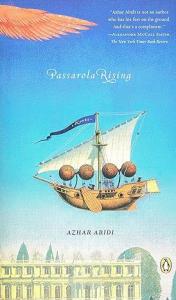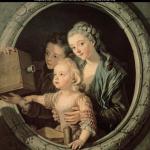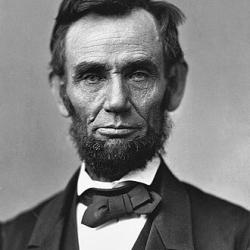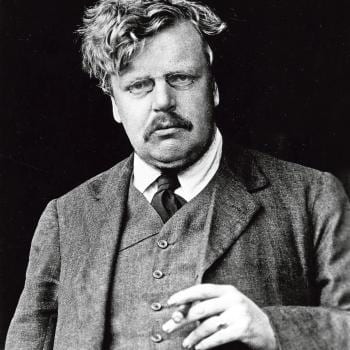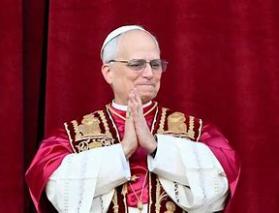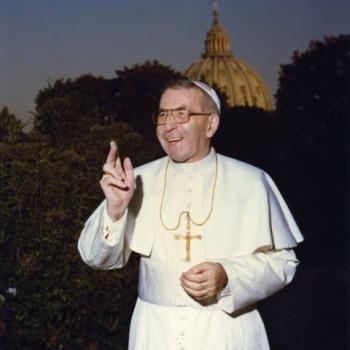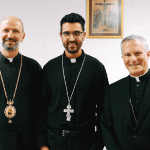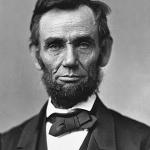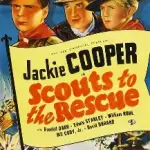Last Time on HOARATS
This Time…
The American Resolution was less than a century away at the beginning of the 18th century.
Here is what happen in the years leading up to the birth of the United States.
First off here are the pope stats of the whole century.
18th Century Popes
Popes 242 – 249 reigned on the throne of St. Peter.
0 Saint Popes
0 Blessed Pope
1 Servant of God Pope
7 Non – Sainted Popes
0 Anti – Popes
1 Interregnum
And now here is
The 18th Century 1700 – 1749
is leading up to
1775. Which Was a Heck of a Ride Around the Sun
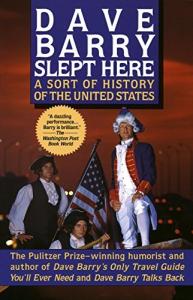
And the years just before and after it.
We start off our look at the 18th century with the early
1700’s
- January 1, 1700 – Protestant nations in Western Europe, except England, start using the Gregorian calendar. Catholic nations have been using the Gregorian calendar since its introduction in 1582 by Pope Gregory XIII.
- June 8, 1700 – The Jesuits are kicked out of Massachusetts with the claim that they have attempted to incite American Indians into a rebellion against the Crown.
NEW POPE
- November 23, 1700 – Cardinal Giovanni Francesco Albani, having been ordained as a Roman Catholic priest only two months earlier, is elected by the Papal conclave to succeed Pope# 242 Non-Saint Innocent XII (July 12, 1691 – September 27, 1700 – 9 years, 77 days) who died at the age of 85 and becomes Pope # 243, taking the name of Non-Saint Clement XI.

- July 9 1701 – St Patrick’s Cathedral, Dublin, makes a grant for work on Marsh’s Library, newly established by Narcissus Marsh (Archbishop of Dublin (Church of Ireland)) as the first public library in Ireland (architect: Sir William Robinson) with refugee French Huguenot scholar Élie Bouhéreau as its first librarian.
- July 26, 1701 – Basilica of Sainte Anne de Détroit (Sainte-Anne-de-Détroit) was founded on this day by French colonists in New France, and is the second-oldest continuously operating Roman Catholic parish in the United States.
- March 4, 1702 – John “Jack” Sheppard (March 4, 1702 – November 16, 1724), or “Honest Jack”, is born. He was a notorious English thief and prison escapee of early 18th-century London.
- 1703 – French settlers in Mobile established the first organised Mardi Gras celebration tradition in what was to become the United States.
- November 30, 1703 – Isaac Newton is elected president of the Royal Society in London, a position he will hold until his death in 1727.
- July 29–31, 1703 – Writer Daniel Defoe is placed in a pillory in London, then imprisoned for four months for the crime of seditious libel after publishing his satirical political pamphlet The Shortest Way with the Dissenters (1702) (his release is granted in mid-November).
- October 23, 1703 – Hannah Twynnoy, a 24-year-old barmaid in Malmesbury, Wiltshire, becomes the first person to be killed in Great Britain by a tiger. While working at the White Lion Inn, where a group of wild animals is on exhibit, she is mauled after bothering the tiger.
- January 26, 1704 – Native American Catholic convert Antonio Cuipa is burned alive on a cross as a martyr. He is one of a thousand or so individuals to be numbered among the The Martyrs of La Florida (d. 1549–1761).
- July, 1704 – Daniel Defoe documents the Great Storm of 1703 in England, with eyewitness testimonies, in The Storm.
Very soon I became as fascinated by Defoe the journalist and Secret Service agent as I had been by Defoe the novelist. He was the first master, if not the inventor, of almost every feature of modern newspapers, including the leading article, investigative reporting, the foreign news analysis, the agony aunt, the gossip column, the candid obituary, and even the kind of soul-searching piece which Fleet Street calls the ‘Why, Oh Why’. As a journalist, as well as a novelist, Defoe excelled in the art of telling a story. He had all the basic instincts of a reporter: he was innately curious; he got straight to the point; and he never missed any quirky detail. One constantly finds in his journalism and non-fiction books the equivalent of his master stroke as a novelist – the moment when Robinson Crusoe finds on his desert island a single footprint in the sand. Defoe always knew how to time a story, first arousing his readers’ curiosity, holding their interest with droll asides, then startling them with an unexpected denouement.
by
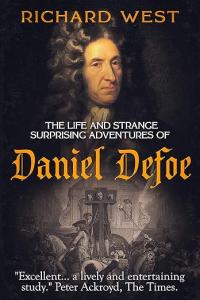
70 years before the Revolution
- July 20, 1705 – The planet Mercury transits Jupiter, as seen by astronomers from Earth. The event happens again on October 4, 1708, but will not be seen again from Earth until October 27, 2088
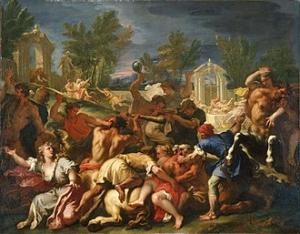
Sebastiano Ricci
The Battle of the Lapiths and the Centaurs (1705)
The House of Arden is a novel for children written by the English author E. Nesbit and published in 1908. A boy named Edred Arden inherits the title of Lord Arden and the dilapidated Arden Castle. He and his sister Elfrida search for the lost treasure of the Ardens and, with the help of the magical Mouldiwarp, they travel back in time searching for clues. The past events they witness include c. 1705: a visit from the “Chevalier St. George” (the Old Pretender) during the reign of Queen Anne
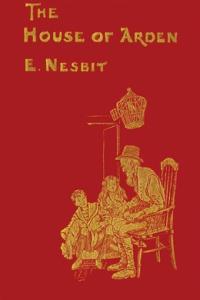
- October, 1706 – Twinings founder, Thomas Twining, opens the first known tea room at 216 Strand, London, still open as of 2023.
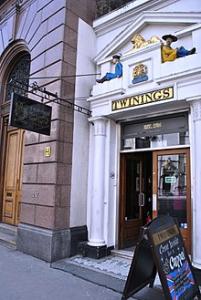
Benjamin Franklin (January 17, 1706 – April 17, 1790) is born.
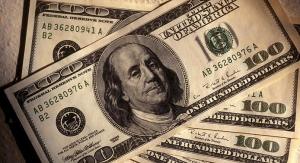
- December 16, 1707 – The last recorded eruption of Mount Fuji begins in Japan.
- 1708 – Isaac Watts, Hymns and Spiritual Songs is published. His works include “When I Survey the Wondrous Cross“, “Joy to the World“, and “Our God, Our Help in Ages Past“. He is recognised as the “Godfather of English Hymnody”; many of his hymns remain in use today and have been translated into numerous languages.
- February 1 or 2, 1709 – During his first voyage, Captain Woodes Rogers encounters marooned privateer Alexander Selkirk, and rescues him after four years living on one of the Juan Fernández Islands, inspiring Daniel Defoe‘s novel Robinson Crusoe. After sacking Guayaquil, he and Selkirk will visit the Galápagos Islands.
- April 17, 1709 – Claude Chauchetière (September 7, 1645 – April 17, 1709) dies. He was a French Jesuit missionary, priest, biographer, and painter. Claude Chauchetière is well known for his published work Annual Narrative of the Mission of the Sault from Its Foundation Until the Year 1686 which detailed his time in New France as a Jesuit missionary. For most of his mission work he was placed in the village of Kahnawake where he encountered Kateri Tekakwitha, an Algonquin-Mohawk Jesuit convert, an encounter that immensely impacted his spiritual life. Later on Chauchetière would also actively work to get Kateri Tekakwitha canonized as a saint.
- August 8, 1709 – The hot air balloon of Bartolomeu de Gusmão flies in Portugal.

1710’s
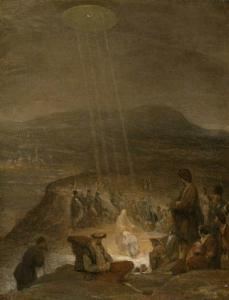
Aert de Gelder – The Baptism of Christ (Fitzwilliam Museum, Cambridge) (1710 approximate date)
Father Eusebio Francisco Kino, SJ (August 10, 1645 – March 15, 1711), often referred to as Father Kino, was an Italian Jesuit, missionary, geographer, explorer, cartographer, mathematician and astronomer born in the Territory of the Bishopric of Trent, then part of a partially German-speaking area of the Holy Roman Empire of the German Nation. For the last 24 years of his life he worked in the region then known as the Pimería Alta, modern-day Sonora in Mexico and southern Arizona in the United States. He explored the region and worked with the indigenous Native American population, including primarily the Tohono O’Odham, Sobaipuri and other Upper Piman groups. He proved that the Baja California Territory was not an island but a peninsula by leading an overland expedition there. By the time of his death he had established 24 missions and visitas (country chapels or visiting stations).
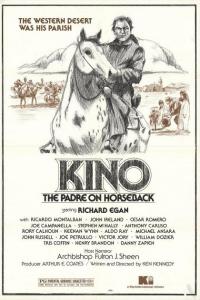
- April 10, 1710 – The world’s first copyright legislation, Britain’s Statute of Anne, becomes effective.
- 1710 – John Smithwick begins brewing Smithwick’s ale at Kilkenny, Ireland (St. Francis Abbey Brewery).
- June 18, 1711 – King Louis XIV becomes the longest-reigning monarch in the world, surpassing the previous record of 68 years set by Kʼinich Janaabʼ Pakal in 683. As of 2022, Louis XIV still holds this record.
- August 14, 1711 – The inauguration of the newly built Cathedral of the Assumption takes place in Gozo, Malta.
- December 8, 1711 – The Immaculate Conception Cathedral, Comayagua in Honduras, one of the oldest cathedrals in Central America, is inaugurated.
- November 4, 1712– Jonathan Swift foils a murder attempt on Robert Harley, 1st Earl of Oxford and Earl Mortimer, in what becomes known as the Bandbox Plot.
- 1712 – St. Louis de Montfort’s True Devotion to Mary with Preparation for Total Consecration is published.
“God the Father has communicated to Mary His fruitfulness, as far as a mere creature was capable of it, in order that He might give her the power to produce His Son, and all the members of His mystical body.”
1712 – Johann Sebastian Bach Fantasia in G major, BWV 572
- November 24, 1713- St. Junípero Serra, Spanish Christian missionary (d. 1784) is born.
- Sept. 8, 1713 – Unigenitus, was a bull issued by Pope Clement XI condemning the doctrines of Jansenism, a dissident religious movement within France. The publication of the bull began a doctrinal controversy in France that lasted throughout much of the 18th century and that merged with the French church’s fight for autonomy, called Gallicanism, and with the opposition of the Parlements (supreme courts) to the crown.
- February 28, 1714 – Russia’s Tsar Peter the Great issues a decree requiring compulsory education in mathematics for children of government officials and nobility, applying to children between the ages of 10 and 15 years old.
- April 12, 1714 – Italian Jesuit missionary Niccolò Gianpriamo is dispatched from Portugal on an evangelical trip to Asia starting with the Portuguese Indian colony of Goa, where he arrives after five months.
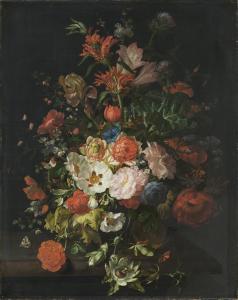
Rachel Ruysch – Bouquet of Flowers 1715 (Alte Pinakothek, Munich)
60 years before the Revolution
- May 3, 1715 – A total solar eclipse is seen across southern England, Sweden and Finland (the last total eclipse visible in London for almost 900 years). English astronomer Edmond Halley (who is using the old style Julian calendar date of April 22) records the first observation noted of the phenomenon of “Baily’s beads“, in which higher elevations on the moon can be observed obscuring portions of the light moments before and after totality.
- September 1, 1715 – Louis XV (February 15, 1710 – May 10, 1774)at the age of five becomes the King of France until his death in 1774. His reign of almost 59 years (from 1715 to 1774) was the second longest in the history of France, exceeded only by his predecessor, Louis XIV, who had ruled for 72 years (from 1643 to 1715).
King of the Wind is a novel by Marguerite Henry that won the Newbery Medal for excellence in American children’s literature in 1949. It was made into a film of the same name in 1990. It features King Louis XV as a Character.

- March 18, 1716 – Italian Jesuit missionary Ippolito Desideri arrives in Lhasa to become one of the first Europeans to attempt to bring Christianity to Buddhist Tibet.
- December 16, 1717 – Blessed Marianna Fontanella, OCD (January 7, 1661 – December 16, 1717) dies. She is also known as Mary of the Angels. Fontanella studied with the Cistercians as a child and entered the Discalced Carmelites despite the protests of her mother and siblings. She soon became a noted abbess and prioress and in 1703 inaugurated a new convent of which she herself oversaw the establishment.
- May 1, 1718 – San Antonio is founded by Father Antonio de San Buenaventura y Olivares with the construction of the initial Mission San Antonio de Valero.
56 years before the Revolution
- April 25 1719: Robinson Crusoe by Daniel Defoe is first published.
1720’s
- February 23, 1720 – Mission San José y San Miguel de Aguayo is founded by Spanish (American) Franciscan missionary Ven Antonio Margil de Jesus (August 18, 1657 – August 6, 1726) in Texas.
- May 25, 1720 – The British privateer Speedwell, captained by George Shelvocke, is wrecked on the uninhabited island of Más a Tierra, the same island where Alexander Selkirk was marooned for five years; the island off of the coast of Chile is later called Robinson Crusoe Island. The crew is marooned for five months but is able to build a boat from timbers salvaged from the wreck, and is able to escape the island on October 6.
- 1720 – Saint Anselm of Canterbury declared a Doctor of the Church
NEW POPE
- May 8, 1721 – Pope Innocent XIII succeeds Pope Clement XI, as the 244th pope.

- December, 20 1721 – Feast of the Holy Name extended to the whole Church
- 1722 – Saint Isidore of Seville declared a Doctor of the Church
- May 30. 1723 – Johann Sebastian Bach assumed the office of Thomaskantor in Leipzig, presenting his first new cantata, Die Elenden sollen essen, BWV 75, in the St. Nicholas Church on the first Sunday after Trinity.
NEW POPE
- May 29 1724 – Cardinal Vincenzo Orsini, the Archbishop of Benevento, accepts the papacy, two days after being unanimously selected by the cardinals at the papal conclave in Rome. He becomes the 245th pontiff as (Servant of God ) Pope Benedict XIII succeeding Pope Innocent XIII who died March 7 at the age of 68 after less than three years as the Roman Catholic pontiff.
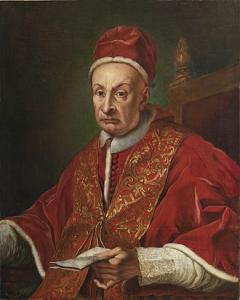
- November 16, 1724 – Highwayman Jack Sheppard is hanged in London.

Sebastiano Ricci – Apotheosis of Saint Sebastian (1725 approximate date)
- 1725 – In China, 66 copies of a 5,020-volume encyclopedia, the Complete Classics Collection of Ancient China are printed, which requires the crafting of 250,000 movable-type characters cast in bronze.
- 1725 – Antonio Vivaldi – Il cimento dell’armonia e dell’inventione, Op. 8 (contains The Four Seasons though they were likely written earlier)
- 1725 – Giambattista Vico’s intellectual magnum opus is the book Scienza Nuova or New Science (1725), which attempts a systematic organization of the humanities as a single science that recorded and explained the historical cycles by which societies rise and fall. He is recognised as one of the first Counter-Enlightenment figures in history.
- August 6, 1726 – Venerable Antonio Margil, OFM (August 18, 1657 – August 6, 1726) dies” Fray Antonio Margil de Jesus walked all over Central and North America, from as far south as Guatemala, and north into present-day Texas and Louisiana. He led academies and founded missions. He was a tireless missionary, was responsible for miraculous occurrences, and was known as the “Friar of the Winged Feet” because of his ability to get from one place to another more quickly than he should have been able.” American Catholic History
- September 24, 1726 – Permission to celebrate the feast of Our Lady of Mount Carmel, celebrated on July 17, is extended by Pope Benedict XIII to the entire Roman Catholic Church.
- November 8, 1726 – Jonathan Swift‘s satirical novel Gulliver’s Travels is first published (anonymously) in London; it sells out within a week.
- March 31, 1727 – Sir Isaac Newton, English scientist (b. 1643) dies.
- January 29, 1728 – The Beggar’s Opera, the most popular theatrical production of the 18th century, is performed for the first time. The premiere takes place at the Lincoln’s Inn Fields.
- August 1, 1729– The Comet of 1729, possibly the largest comet based on the absolute magnitude, on record, is discovered by Fr. Nicolas Sarrabat, a professor of mathematics at Marseille.
- 1729 – Saint Peter Chrysologus declared a Doctor of the Church.
1730’s
NEW POPE
- July 12, 1730 – The papal conclave selects Cardinal Lorenzo Corsini over Cardinal Pietro Marcellino Corradini as the successor to Pope Benedict XIII. Corsini becomes Pope Clement XII as the 246th pope.

- 1730 – Pope Clement XII commissions Nicola Salvi to renovate the Trevi Fountain
- July 1, 1731 – Benjamin Franklin and fellow-subscribers start the Library Company of Philadelphia.
- August 23, 1731 – The oldest known sports score in history is recorded in the description of a cricket match at Richmond Green in England, when the team of Thomas Chambers of Middlesex defeats the Duke of Richmond’s team by 119 to 79.
- September, 1731 – The first successful appendectomy is performed by English surgeon William Cookesley.
In the year 1731, Alexandre Lourenco watches as his brother Bartolomeu’s airship, the Passarola, ascends from the ramparts of St. Jorge’s Castle in Lisbon. When the brothers board the ship, they embark on a journey that will take them from the salons and bordellos of Enlightenment Paris to the desolate far reaches of the North Pole, in search of scientific truth and knowledge. As they encounter such characters as the loquacious Voltaire and the irascible King Stanislaus of Poland, and attempt to escape Russian enemy fire and the condemnation of Portugal’s Cardinal Conti, Alexandre hopes to find his calling in life, while his brother keeps his eyes on the Passarola’s next horizon.
by
- February 22, 1732 – George Washington, first President of the United States (d. 1799) is born.
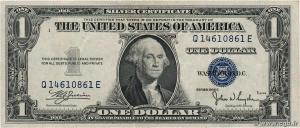
- December 19 1732 – Benjamin Franklin, in the Pennsylvania Gazette, first advertises the publication of Poor Richard’s Almanack, purportedly written by “Richard Saunders”, a pen name used by Franklin. The book goes on sale on December 28. The annual publication will continue until 1758.
- November 23, 1733 – The 1733 slave insurrection on St. John begins: Slaves from Akwamu rebel against their owners in the Danish West Indies.
- November 2, 1734 – Daniel Boone, American frontiersman (d. 1820) is born.
- December 19 1735 – At the age of 8 years old, Prince Luis of Spain becomes the youngest Roman Catholic Cardinal in history, after being named by Pope Clement XII.
- 1735 Giovanni Battista Piazzetta paints The Assumption of Mary. (The Louvre)
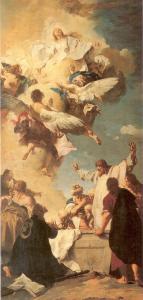
- December 7, 1736– Benjamin Franklin builds the first volunteer fire company in Philadelphia.
- April 5, 1737 – French Jesuit priest Jean-François Régis is canonized as Saint Regis by the Roman Catholic Church under the reign of Pope Clement XII.
- November 4, 1737 – The Teatro di San Carlo, the oldest working opera house in Europe, is inaugurated in Naples, Italy.
- April 28, 1738 – Pope Clement XII issues the papal bull In eminenti apostolatus, prohibiting Roman Catholics from being members of Masonic societies.[7]
- May 24, 1738 – John Wesley, newly returned from America, experiences a spiritual rebirth at a Moravian Church meeting in Aldersgate, in the City of London, essentially launching the Methodist movement; the day is celebrated annually by Methodists as Aldersgate Day (his younger brother Charles had a similar experience three days earlier).
- April 7 1739– Dick Turpin, English highwayman (hanged) (b. 1705)
Dick Turpin (Public Domain Movies) 1925 Full Movie (youtube.com)
1740’s
NEW POPE
- August 17, 1740 – Pope Benedict XIV succeeds Pope Clement XII, as the 247th pope.
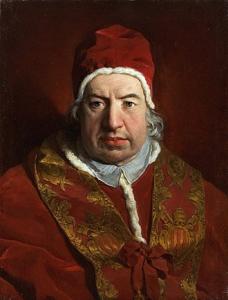

May 14, 1741– HMS Wager, one of the vessels of George Anson’s voyage around the world, is wrecked on the coast of Chile, killing most of the crew who have survived scurvy.
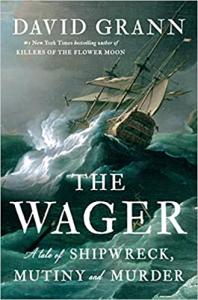
August 22, 1741–September 14 – George Frideric Handel composes his oratorio Messiah in London to a libretto compiled by Charles Jennens, completing the “Hallelujah Chorus” on September 6.
- April 13, 1742 – George Frideric Handel‘s oratorio The Messiah is first performed, in Dublin, Ireland in aid of local charities.
- September 5, 1742 – The 46 survivors of Russia’s Great Northern Expedition return to Petropavlovsk after having been shipwrecked on an island in the Bering Strait ten months earlier. They had completed the building of a new ship from the wreckage of the St Pyotr on August 21.
- April 1, 1743 – Pope Benedict XIV issues a new bull, barring agreements by spouses to not appeal annulments of marriages
- October 21, 1743 – Benjamin Franklin‘s view of a lunar eclipse from Philadelphia is spoiled by a rainstorm; several days later, he learns that residents of Boston received the same storm hours after the eclipse, demonstrating that weather moves from west to east.
- June 28, 1744 – At the age of 15, Princess Sophie of Anhalt-Zerbst, the future Empress of Russia, is received into the Russian Orthodox Church after converting from the Lutheran faith. Upon her conversion to the Russian Orthodox religion, she is given the name Yekaterina (Catherine). In 1762, she takes the throne as the Empress Catherine II, later known as Catherine the Great.
- October 4, 1744 – In one of the greatest disasters for the Royal Navy, HMS Victory sinks in a storm in the English Channel, killing 1,100 sailors and officers it had been bringing back from Gibraltar to England, including Admiral John Balchen. The wreck will be located 264 years later, in January, 2009.

1744- Jean-Étienne Liotard – The Chocolate Girl (approximate date)
- October 19 – Jonathan Swift, Anglo-Irish writer (b. 1667) dies.
This man of mystery produced a book that became world-famous. Everybody recognizes the image of Gulliver tied down on the ground by a host of tiny people, even if they have not read the masterpiece from which it comes. A stunningly original fantasy, it is uncanny in Freud’s sense of that term: strange and yet familiar, absurd and yet believable. Many children, and many adults too, have loved Gulliver’s Travels. To this day, at least two dozen publishers are keeping it in print, and it is a universal classic, its fame extending beyond the English-speaking world. But few know much about the man who wrote Gulliver’s Travels, or about the long-ago world that for him was the present moment. Swift still matters, three and a half centuries after his birth, because he was a great writer and a great man.
Jonathan Swift (2013 ) Leo Damrosch Yale University Press
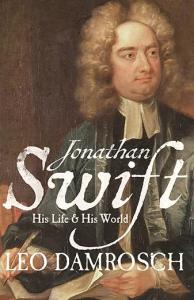
- November 1, 1745 – Pope Benedict XIV issues the encyclical Vix pervenit, referred to in English as “On Usury and Other Dishonest Profit”, condemning the charging of interest on loans as a sin against the Roman Catholic Church
- June 18, 1746 – Samuel Johnson is contracted to write his A Dictionary of the English Language.
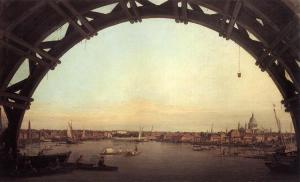
1747 – Canaletto – London seen through an arch of Westminster Bridge (c. 1746–47)
- 1747 – The Art of Cookery Made Plain and Easy by Hannah Glasse becomes the first formally published modern cookbook in English. The book was popular in the Thirteen Colonies of America, and its appeal survived the American War of Independence, with copies being owned by Benjamin Franklin, Thomas Jefferson and George Washington.
The FAIR, who’s Wise and oft consults our BOOK,
And thence directions gives her Prudent Cook,
With CHOICEST VIANDS, has her Table Crown’d,
And Health, with Frugal Ellegance is found.
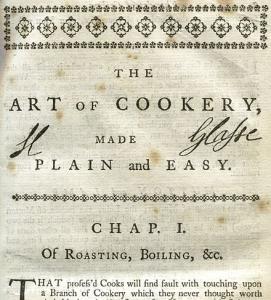
- 1747 – Johann Sebastian Bach is presented to King Frederick II of Prussia in Potsdam; the king plays a theme for Bach and challenges the musician to improvise a six-part fugue based on it. The result is Musikalisches Opfer, BWV 1079 (the Musical Offering)
February 28, 1747 – Justin Morgan (February 28, 1747 – March 22, 1798) is born. He was a U.S. horse breeder and composer. He is the main character in the novel Justin Morgan Had a Horse. The book is an American children’s historical novel by Marguerite Henry, It concerns Justin Morgan and his bay stallion Figure, who lived in Vermont in the late eighteenth century. It was a runner-up for the Newbery Medal in 1946.
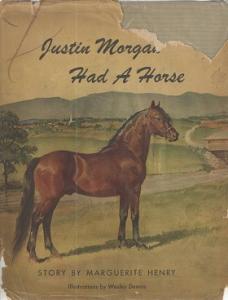
- March, 10, 1748– Amazing Grace writer John Newton converts to Christianity
- 1749– Émilie du Châtelet (December 17, 1706 – 10 September 10, 1749) dies. She completed the work regarded as her outstanding achievement: her translation into French, with her commentary, of Newton’s Philosophiae Naturalis Principia Mathematica (often referred to as simply the Principia), including her derivation of the notion of conservation of energy from its principles of mechanics
- 1749–The Mass in B minor is an extended setting of the Mass ordinary by Johann Sebastian Bach. The composition was completed the year before the composer’s death, and was to a large extent based on earlier work, such as a Sanctus Bach had composed in 1724.
- 1949 – David Zeisberger began as a missionary to Native American peoples who resided in the Thirteen Colonies following his ordination as a Moravian minister.
Next Time on
HOARATS
To Understand
What I love and How I Write About History
Hit the Link Above.
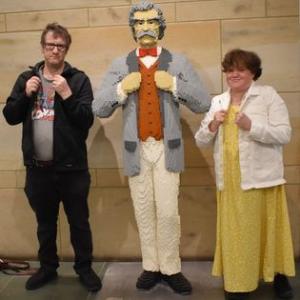
To understand about this particular series I’m writing about, please read
The Catholic Bard’s Guide To History Introduction
And to view a historical article click on


